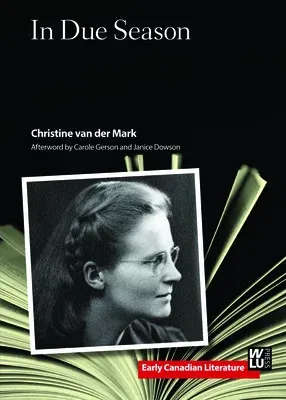Christine Van Der Mark
(Author)In Due SeasonPaperback, 17 May 2016

Qty
1
Turbo
Ships in 2 - 3 days
In Stock
Free Delivery
Cash on Delivery
15 Days
Free Returns
Secure Checkout

Part of Series
Early Canadian Literature
Print Length
375 pages
Language
English
Publisher
Wilfrid Laurier University Press
Date Published
17 May 2016
ISBN-10
1771120711
ISBN-13
9781771120715
Description
Product Details
Author:
Book Format:
Paperback
Country of Origin:
US
Date Published:
17 May 2016
Dimensions:
17.53 x
12.7 x
2.03 cm
ISBN-10:
1771120711
ISBN-13:
9781771120715
Language:
English
Location:
Waterloo, ON
Pages:
375
Publisher:
Series:
Weight:
317.51 gm